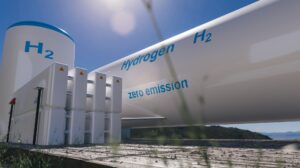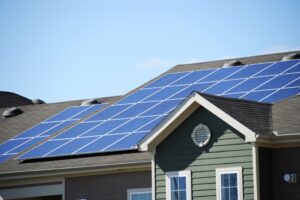Alberta 
Ottawa dedicates $9.7M to hydrogen technology development in Alberta
 Government officials say the $9.7 million will be used to improve access to hydrogen technology, develop and test that technology, attract investment and develop training. The Alberta Motor Transport Association and University of Alberta together received about a third of the federal dollars – $3 million – to put on a hydrogen fuel showcase in February. Organizers are planning road tests of hydrogen-diesel dual-fuelled trucks and hydrogen-only fuelled trucks on Highway 2 between Edmonton and Calgary. The Alberta government is also contributing $3 million to the work through Alberta Innovates’ Hydrogen Centre of Excellence. Governments expect the global hydrogen market to exceed $11 trillion by 2050. Source: CTV News Edmonton
Government officials say the $9.7 million will be used to improve access to hydrogen technology, develop and test that technology, attract investment and develop training. The Alberta Motor Transport Association and University of Alberta together received about a third of the federal dollars – $3 million – to put on a hydrogen fuel showcase in February. Organizers are planning road tests of hydrogen-diesel dual-fuelled trucks and hydrogen-only fuelled trucks on Highway 2 between Edmonton and Calgary. The Alberta government is also contributing $3 million to the work through Alberta Innovates’ Hydrogen Centre of Excellence. Governments expect the global hydrogen market to exceed $11 trillion by 2050. Source: CTV News Edmonton
Electricity Prices for Alberta
The Alberta power pool price averaged 12.613 cents per kWh in January 2023. This price is 18.56 cents lower than last month’s average. The pool price has averaged 16.508 cents per kWh over the last 12 months.
As of February 1, 2023, the forward market was predicting electricity prices for the calendar years of 2023, 2024, 2025, 2026, 2027, and 2028. These prices are 12.204, 9.452, 8.100, 7.600, 7.675, and 7.675 cents per kWh respectively.
Gas Prices for Alberta
Direct Energy’s gas rate for January 2023 was $6.446 per GJ in Alberta. The February 2023 rate has been set at $3.090 per GJ. Alberta gas prices have averaged $5.888 per GJ over the last 12 months.
As of February 1, 2023, the forward market was predicting gas prices for the calendar years of 2023, 2024, 2025, 2026, and 2027. These prices are 2.9, 3.28, 3.70, 3.92, and 4.02 cents per GJ respectively.
British Columbia 
Remote First Nations communities advance clean-energy projects
 Twelve First Nations communities throughout British Columbia will receive $7.1 million to develop alternative-energy projects and advance energy efficiency through the Province’s Community Energy Diesel Reduction (CEDR) program, a CleanBC initiative. The energy projects range in size and scope, from $350,000 for the construction of a biomass combined heat-and-power system for the Lhoozk’uz Dene Nation (Quesnel area), to $2 million to develop and build a two-megawatt solar farm on Haida Gwaii’s northern grid that will include battery storage.
Twelve First Nations communities throughout British Columbia will receive $7.1 million to develop alternative-energy projects and advance energy efficiency through the Province’s Community Energy Diesel Reduction (CEDR) program, a CleanBC initiative. The energy projects range in size and scope, from $350,000 for the construction of a biomass combined heat-and-power system for the Lhoozk’uz Dene Nation (Quesnel area), to $2 million to develop and build a two-megawatt solar farm on Haida Gwaii’s northern grid that will include battery storage.
British Columbia has 44 remote communities, most of which are governed by First Nations. Many of these communities are served by BC Hydro in non-grid integrated areas. Some First Nations own and operate their own diesel generators. In 2019, the remote communities consumed at least 19.1 million litres of diesel, emitting the equivalent of 51,784 tonnes of carbon dioxide. CleanBC is a pathway to a more prosperous, balanced, and sustainable future. It supports government’s commitment to climate action to meet B.C.’s emission targets and build a cleaner, stronger economy. Source: British Columbia
Ontario 
Ford government set to expand gas power as Windsor blesses new project
More than a decade after Ontario scrapped plans to build two natural gas power plants, the Ford government is set to usher in a new era of fossil-fuelled electricity. The expansion of gas power — the first since former premier Dalton McGuinty ditched two controversial gas plants in 2011 — could be built on the shores of Windsor’s Detroit River, after the city’s council voted to endorse plans for two new gas turbines. Capital Power, the company behind the city’s existing gas plant, hopes to build two new gas-fired turbines, adding around 100 megawatts of electrical generation. The pitch comes as Ontario scrambles for new sources of electricity, facing potential shortfalls in both the 2020s and 2030s. Windsor’s status as the first potential jurisdiction in Ontario to accept new gas power comes despite a motion passed by local city councillors in November 2020, calling for the phase-out of gas power. That motion was effectively reversed when council approved the plans for two new gas-powered electrical turbines in the city. Source: Global News
Saskatchewan 
Saskatchewan’s carbon tax program begins
 The federal carbon tax on industrial emitters began at the beginning of the new year, which means the Saskatchewan output-based performance standards (OBPS) program has begun in the province. This provincial plan was a federally approved alternative to the federal program. The province says regulated emitters will receive credit for carbon emissions under the permitted amount, adding that this will create incentives to reduce emissions. Credit will also be given for carbon capture, utilization, and storage, with the province adding that regulated emitters will have the option of paying into the Saskatchewan Technology Fund.
The federal carbon tax on industrial emitters began at the beginning of the new year, which means the Saskatchewan output-based performance standards (OBPS) program has begun in the province. This provincial plan was a federally approved alternative to the federal program. The province says regulated emitters will receive credit for carbon emissions under the permitted amount, adding that this will create incentives to reduce emissions. Credit will also be given for carbon capture, utilization, and storage, with the province adding that regulated emitters will have the option of paying into the Saskatchewan Technology Fund.
A discussion paper from the provincial government back in February said the OBPS program will match the federal carbon pricing schedule, which will start at $65 per tonne CO2e (carbon dioxide equivalent) for 2023, with a $15 increase each year until 2030, which will sit at $170 per tonne CO2e. According to the discussion paper, the province will also begin program level reporting on information regarding the system, including the amount of greenhouse gas emissions covered by the carbon pricing program, the number of credits issued, compliance fulfillment, and credit status. Source: Global News
Manitoba 
The city is trying to get involved with solar energy
The city of Winnipeg may soon be looking to find new solar power generation sites with the goal of using green energy in public buildings. A new application to the Water, Waste and Environment Committee asks public services to identify city lands suitable for solar power generation and to provide a business case for developing up to a megawatt of renewable energy generation for city use to complete. The City Council said the call to find green energy sources would be based on a campaign pledge made by Mayor Scott Gillingham. His campaign set a goal for Winnipeg to build “at least” one megawatt of renewable energy generation capacity by 2026. While Manitoba relies heavily on hydropower, Mitchell said it’s critical that governments diversify energy supplies to help them address climate change. As extreme weather events become more common, such as B. severe winter storms that can shut down hydroelectric power for thousands of customers at once, she believes solar power sources have the potential to provide backup power. Source: Canada Today
New Brunswick 
New Brunswick banking on nuclear, Atlantic Loop to meet power needs after coal phase-out
New Brunswick’s deputy minister of natural resources and energy development says the province is looking to additional nuclear capacity and upgraded transition lines in order to meet its power needs after coal power generation is phased out in 2030. NB Power’s Belledune Generating Station is the province’s only coal-fired generation plant and has a capacity of more than 450 megawatts making it one of the province’s largest power generators. That capacity will need to be replaced by 2030, when a federal ban on the use of coal power takes effect. NB Power is also looking at replacement fuels for the Belledune station in order to keep it running until the end of its lifespan in 2040. The future of the Atlantic Loop, the name for a series of power transmission upgrades allowing for the transfer of power between the Atlantic provinces and Quebec, is still up in the air with the funding share between the provinces and federal government still in dispute. Source: Global News
Prince Edward Island 
Stratford lands another $1M in ‘very enticing’ home energy efficiency funding
 A program that offers zero-interest loans for home energy efficiency upgrades has earmarked another $1 million in funding for residents of Stratford, P.E.I., and the company behind the Switch program says more money may soon be heading to other Island municipalities too. Stratford and Charlottetown both got funding from the Federation of Canadian Municipalities in 2021 for the Switch Efficiency Program. The Charlottetown program received $9.5 million in funding and has handed out about $6 million so far. The Stratford program took off with homeowners there, and the $2.5 million in funding was gone by June 2022. It was used to fund 150 interest-free projects installing things like solar panels, heat pumps, new windows and insulation. Now, the federation has given Stratford an additional $1 million, and the town is using that to tackle the waiting list left when the program ran out; the additional money should be enough to fund upgrades to another 50 to 70 homes. Source: CBC
A program that offers zero-interest loans for home energy efficiency upgrades has earmarked another $1 million in funding for residents of Stratford, P.E.I., and the company behind the Switch program says more money may soon be heading to other Island municipalities too. Stratford and Charlottetown both got funding from the Federation of Canadian Municipalities in 2021 for the Switch Efficiency Program. The Charlottetown program received $9.5 million in funding and has handed out about $6 million so far. The Stratford program took off with homeowners there, and the $2.5 million in funding was gone by June 2022. It was used to fund 150 interest-free projects installing things like solar panels, heat pumps, new windows and insulation. Now, the federation has given Stratford an additional $1 million, and the town is using that to tackle the waiting list left when the program ran out; the additional money should be enough to fund upgrades to another 50 to 70 homes. Source: CBC
Québec 
Hydro-Québec is helping businesses optimize energy consumption
Due to rapid economic growth and the electrification of the transportation industry, electricity demand is expected to increase by 14 per cent in Quebec by 2032. Companies that implement energy efficiency measures reduce their electricity bill, which helps make them more competitive. They also position themselves as agents of change for the benefit of society, which improves their brand image. By consuming less and using electricity wisely, companies that participate in Hydro-Québec’s Efficient Solutions Program are helping to manage Quebec’s hydropower more efficiently, thereby contributing to Quebec’s energy transition. Hydro-Québec’s Efficient Solutions Program provides eligible companies with financial assistance to conduct an energy analysis of one or more buildings and implement energy efficiency measures to reduce their electricity bill. Some energy efficiency measures that can save electricity include optimizing lighting, heating, and air conditioning.
The Hydro-Québec Efficient Solutions Program, which was expanded last year, now includes an energy analysis. Eligible business customers can obtain up to $50,000 in financial assistance to carry out an energy analysis designed to target energy efficiency projects. Industry professionals like engineering consulting firms, contractors and companies specializing in energy can also promote the Efficient Solutions Program with their clients to help them find and implement energy efficiency projects. In addition to being key players in the energy transition and helping Quebec achieve carbon neutrality, these partners will also receive compensation for helping companies participate in the program. Source: Montreal Gazette
Newfoundland and Labrador 
Digging it: Newfoundland and Labrador’s mining industry expected to pick up steam in 2023
According to the provincial government, the mineral industry continues to be a key economic driver and attraction for outside investment. And the federal government has been noticing what Newfoundland and Labrador can contribute to a future green economy — cleaner oil in the offshore, hydro-electricity potential, an abundance of wind energy opportunities, and a growing awareness of treasures underneath the sod. In addition to traditional mining minerals such as iron ore, nickel and gold, the province is getting noticed for its potential deposits of critical minerals, with a discovery of high-grade lithium in southwestern Newfoundland leading the hype. Lithium is used in the manufacturing of rechargeable batteries, such as those used in electric vehicles, and has been identified by the Government of Canada as a critical mineral. The federal government recently gave the province $5.2 million — to be spread out over the next three years — to deliver two new critical mineral initiatives focused on geoscience and exploration activities. Source: Saltwire
Nova Scotia 
Ottawa’s carbon tax will hit Nova Scotia hard
 After rejecting the Houston government’s plan to reduce emissions, the Trudeau government recently announced it will impose the federal carbon tax on Nova Scotians on July 1, 2023, fuelling more acrimony between the two governments. Ottawa’s move comes at a time when many Nova Scotians are struggling to pay for basic necessities including gasoline and home heating oil, which have recently increased substantially in price. And the federal government’s plan is explicitly designed to further increase the price of these goods and many others. Nova Scotia’s previous “cap and trade” system focused on large emitters, but under Ottawa’s new plan, the federal government will a impose a direct tax on greenhouse gas emissions beginning at $65 per tonne of carbon in 2023, increasing by $15 per year, until reaching $170 per tonne in 2030. In 2023, the tax will add a projected 13 cents per litre to the price of gas, and 15 cents per litre to the price of home heating oil.
After rejecting the Houston government’s plan to reduce emissions, the Trudeau government recently announced it will impose the federal carbon tax on Nova Scotians on July 1, 2023, fuelling more acrimony between the two governments. Ottawa’s move comes at a time when many Nova Scotians are struggling to pay for basic necessities including gasoline and home heating oil, which have recently increased substantially in price. And the federal government’s plan is explicitly designed to further increase the price of these goods and many others. Nova Scotia’s previous “cap and trade” system focused on large emitters, but under Ottawa’s new plan, the federal government will a impose a direct tax on greenhouse gas emissions beginning at $65 per tonne of carbon in 2023, increasing by $15 per year, until reaching $170 per tonne in 2030. In 2023, the tax will add a projected 13 cents per litre to the price of gas, and 15 cents per litre to the price of home heating oil.
While these rising costs are highly visible, the plan will create other important but less noticeable costs on the economy, even after most of the revenue collected from the carbon tax gets refunded to Nova Scotia families. For Nova Scotia, the $170 per-tonne carbon tax will shrink the economy (measured by GDP) by an estimated 2.4 per cent and result in nearly 1,000 job losses by 2030. Source: Fraser Institute
Nunavut 
Minister Wilkinson Announces an Investment for the Nunavut All-of-Government Energy Forum
Across the country, Canadians are feeling the impacts of climate change. Investments in renewable energy initiatives that support energy independence and economic development will ensure we build a clean energy future that strengthens the economy, creates good, middle-class jobs, and supports the natural resource sectors. Jonathan Wilkinson, Minister of Natural Resources, announced an investment of more than $455,000 to the Nunavut Economic Developers Association to host the Nunavut All-of-Government Energy Forum in Iqaluit. This funding comes from the capacity-building stream of the Smart Renewables and Electrification Pathways Program. These investments demonstrate the Government of Canada’s ongoing commitment to supporting innovative projects in energy sectors toward a clean, sustainable and competitive energy and resource industry while reducing greenhouse gas emissions, advancing economic reconciliation and fighting climate change. Source: Government of Canada
Northwest Territories 
New power plant opens in łutselk’e
The new plant replaces one that had reached the end of its service life, having powered the community for several decades. The new plant will provide more reliable service, reduce greenhouse gas emissions associated with electricity generation by approximately 100 tonnes annually, and allow for the future addition of renewables to the local energy system. In response to resident input received during the planning phase, the new plant is located away from the centre of town, thereby making it quieter for residents. The project received more than $8.7 million in funding from the Government of Canada through the Investing in Canada Infrastructure Program (ICIP). Final costs for the plant are still being assessed but are expected to be approximately $14.9 million. Source: Northwest Territories Power Corporation
Yukon 
Yukon potential highlighted at Roundup mining conference
The Yukon delegation highlighted the territory’s mineral potential and progressive mining industry along with a wide range of government initiatives underway to support mining, including regional land-use planning, wetlands stewardship, renewable energy, and new minerals legislation under development in partnership with Yukon First Nations. During Roundup, geologists from the Yukon Geological Survey presented the results of their fieldwork to the mining and investment community. Government of Yukon officials also introduced exploration and mining companies and potential investors to the many mineral development opportunities in the territory. Source: Yukon